#develop sustainable networks of community care and support
Text
you guys are seriously not close to doing anything revolutionary if you can't change your fucking consumption habits lol
#aka: go vegan and stop buying from places with known human rights abuses#develop sustainable networks of community care and support#'oh but what about xyz demographic' shut the fuck up#everyone does the most they can. i won't judge anyone who can't do anything for their health and well-being#but a lot of you could be doing better and simply don't choose to#my text
266 notes
·
View notes
Text
For almost 15 years, the sight of Hungarian Prime Minister Viktor Orban strutting into leaders’ summits in Brussels has been a constant of European Union politics. Leveraging his authoritarian grip on power in Hungary, Orban has pressured the EU into providing subsidies to patronage networks controlled by his Fidesz Party, while leading a populist onslaught against liberalism and the left. But even as Orban attracts fawning admiration from other anti-liberal populists in Europe and the United States, cracks are beginning to show in his own power base in Hungary.
The recent surge of infighting within Fidesz’s political machine has taken many observers in and outside Hungary by surprise. After the party’s initial massive election victory in 2010, the collapse of rival parties that had mismanaged the economy and become engulfed in scandal when in government provided Orban’s inner circle with the opportunity to seize control of state media, the central bank and appointments to all levels of the judiciary. Having secured complete control of the state, Orban and his Fidesz cronies used repressive tactics by the security services as well as aggressive disinformation to divide the opposition and intimidate business leaders and civil society networks.
The regime’s near-complete dominance of Hungarian-language media has enabled Orban as well as the party’s regional bosses to use a blend of anti-migrant xenophobia and hostility to LGBTQ rights to sustain a strong base of support in small towns and rural communities. Orban has been more careful in recent years when it comes to fueling irredentist hostility against Romania, Ukraine and Slovakia over territory lost to neighboring states after Hungary’s defeat in World War I. But the Fidesz machine still tries to present Orban as a protector of Hungarian minorities abroad to its right-wing domestic audience.
In part because of the divide and rule tactics used by Fidesz since the early 2010s, but also because they lack deep historical traditions and resilient structures, the Hungarian opposition has been paralyzed by squabbling among parties and movements as hostile to one another as they are to Fidesz. More recent efforts to construct a united front in the face of Orban’s authoritarianism have struggled to sustain the cohesion needed to keep supporters mobilized in the face of mounting state pressure.
Yet state capture, disinformation and virulent nationalism alone would not have been enough to enable the Fidesz machine to secure Orban’s lasting dominance. With Hungary’s accession to the EU in 2004, whoever was in power in the late 2000s was going to be able to take credit for the impact that huge flows of funding from Brussels had on infrastructure development and economic growth in the aftermath of the great financial crisis. For all the fierce populist rhetoric Orban directs against Brussels to court Trumpian nationalists in the U.S. and the far right in Europe, the extent to which Fidesz relies on the distribution of EU funds to sustain its dominance within Hungary has kept Orban from being too disruptive when it comes to European integration.
Though the European Commission’s concerns over the erosion of rule of law in Hungary remain a severe point of friction, Orban’s willingness to avoid escalation over other contentious issues—such as aid for Ukraine or environmental regulation—has made it difficult for the Hungarian opposition to take advantage of the tensions he has stoked with Brussels. The fact that Orban’s patronage network now reaches deep into the Hungarian banking sector and national oil company has also provided Fidesz with options beyond EU subsidies with which to shape economic conditions ahead of elections. In the face of Fidesz’s overwhelming strength and willingness to use security services to intimidate opponents, the inability of opposition parties to make any significant gains during the 2022 parliamentary elections seemed to bury any hopes of change in Hungary for the foreseeable future.
Yet even as Orban successfully cultivated enthusiasm for his project among the populist right in the U.S. and EU, tensions were building up within his own power structure that could prove a much greater threat to the survival of the Fidesz political machine than a cowed Hungarian opposition. After such a long record of dominance, many senior figures loyal to Orban had become complacent over the impact a wave of political scandals might have on the Hungarian public at a time when inflation and other economic pressures were generating frustration even among Fidesz’s core supporters.
With the shock resignation in early February of President Katalin Novak and former Justice Minister Judit Varga over efforts within the government to cover up a child abuse scandal, tensions within Orban’s power structure have now burst into the open. In response, Peter Magyar—a senior figure within the Orban regime as well as Varga’s ex-husband—resigned from his positions at state-owned enterprises and founded a new political movement with the aim of dismantling a corrupt status quo. By early April, Magyar’s new opposition Tizsa Party was leading mass protests in Budapest and rapidly preparing a nationwide network designed to peel off elected officials and voters among Orban’s political base in smalltown Hungary.
The sudden defection of a figure like Magyar, who had long worked at the heart of the Fidesz political machine, is not just the result of a sudden discovery of moral scruples. As with many similar semi- or fully authoritarian regimes, the longer Orban has remained in office, the more entrenched various figures within his inner circle have become at the highest levels of power. For ambitious mid-40s careerists like Magyar, the grim prospect of waiting another decade for Orban’s inner circle—all 60-70 years old—to finally leave the scene was already fueling impatient frustration even before the current wave of scandals engulfed Fidesz.
Orban’s channeling of tens of millions of euros into populist think tanks and conferences designed to impress self-declared national conservatives in the U.S. and U.K. also generated the image of a leader so engaged in the Anglosphere’s culture wars that he had become detached from the everyday concerns of Hungarian politics. For an insider like Magyar, fed up with both waiting for a turn at the top and Orban’s obsession with his world historical role, the time seemed ripe to break away and establish a new political machine.
Deploying messaging and mobilization techniques eerily similar to those used by Orban’s team before it took power in 2010, Magyar has tried to knit together an electoral coalition made up of liberal-leaning voters who had always opposed the current government and a large swathe of Fidesz voters tired of the rampant cronyism at the heart of Orban’s patronage networks. But while Fidesz defectors like Magyar may eventually help to restore the rule of law and work more constructively in EU institutions, they are also likely to continue embracing the populist themes that propelled Orban to power. Moreover, in working to entice Fidesz regional bosses to switch allegiance to his new movement, Magyar will likely replicate the clientelist structures Orban has used to secure the loyalty of smalltown elites through the distribution of state and EU funds.
Magyar is also now the target of a full onslaught of attacks from media loyal to Orban, so there is no guarantee he can capitalize on his rise to prominence to make significant electoral gains in upcoming European Parliament and local elections, which his movement needs to survive. To prevent the fracturing of his own power base, Orban may also do his utmost to offer financial incentives and senior positions to bring Magyar and other defectors back into the Fidesz political machine. Though Magyar’s ambitions will remain focused on replacing Orban as prime minister, business networks worried about instability that a clash between the two might bring will also try to broker a negotiated transfer of power that avoids any deeper reforms.
Even if Magyar falters, the speed with which Fidesz’s internal tensions have turned into an external challenge to its political machine is an indication of how brittle Orban’s grip on power has become. Even the most dominant authoritarian leader will always face dilemmas when it comes to rewarding ambitious young talent without alienating older cronies whose loyalty is the glue that holds a clientelist system together. If Orban is eventually toppled, it should surprise no one if the figures who were once closest to him turn out to be the ruthless operators that finally take him down.
14 notes
·
View notes
Text
GIS In Our Daily Lives
The involvement of Geographic Information Systems (GIS) in our daily lives is pervasive, influencing and enhancing various aspects across different sectors. The integration of GIS into everyday activities has become integral for decision-making, planning, and optimizing resources. GIS helps city planners and transportation experts to provide them with information like maps, satellite pictures, population statistics, and infrastructure data. GIS helps them make better decisions when designing cities and transportation systems that are sustainable and good for the environment.
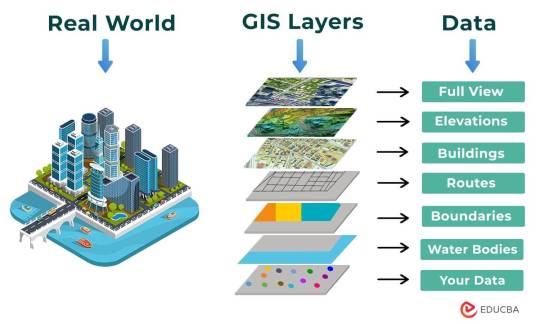
The following points elucidate the notable involvement of GIS in our daily lives:
Navigation and Location Services: GIS provides monitoring functions through the visual display of spatial data and precise geographical positioning of monitored vehicles, whereas GPS provides accurate, clear, and precise information on the position and navigation of a monitored or tracked vehicle in real-time and at the exact location.GIS is at the core of navigation applications and location-based services on smartphones. It enables accurate mapping, real-time navigation, and geolocation services, assisting individuals in finding locations, planning routes, and navigating unfamiliar areas.
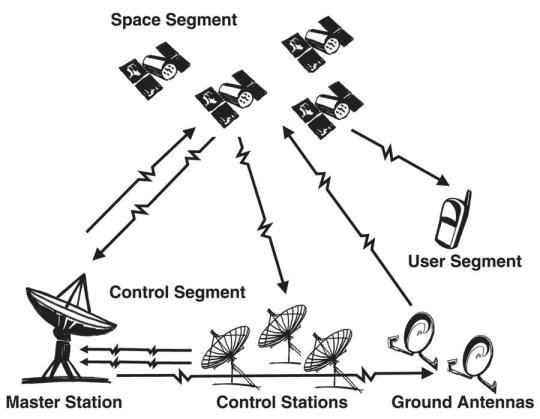
E-Commerce and Delivery Services: GIS software is a powerful tool for supply chain network planning. It helps determine the optimal location for distribution centers, warehouses, or other supply facilities. GIS is utilized in logistics and delivery services for optimizing routes, tracking shipments, and ensuring timely deliveries. E-commerce platforms leverage GIS to enhance the efficiency of their supply chain and last-mile delivery processes.
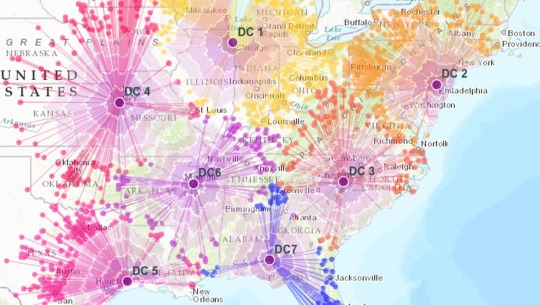
Weather Forecasting and Disaster Management: Many states are using GIS dashboard to monitor the rainfall across the state, on a real-time basis, from the data shared by rain sensors installed at various locationsGIS plays a crucial role in weather forecasting and disaster management. It assists meteorologists in analyzing spatial data, predicting weather patterns, and facilitating timely responses to natural disasters by mapping affected areas and coordinating emergency services.

Healthcare Planning and Disease Monitoring: Geographic Information Systems enable the visualization and monitoring of infectious diseases. Additionally GIS records and displays the necessary information that health care needs of the community as well as the available resources and materials. GIS supports public health initiatives by mapping the spread of diseases, analyzing healthcare resource distribution, and assisting in the planning of vaccination campaigns. It aids in identifying high-risk areas and optimizing healthcare service delivery.

Social Media and Geo-tagging: GIS also helps in geotagging and other location related information in posts, it’s tools can map and visualize the spatial distribution of social media activity. This analysis can reveal trends, hotspots, and patterns in user engagement across different geographic areas. Many social media platforms incorporate GIS for geo-tagging, allowing users to share their location and experiences. This feature enhances social connectivity and facilitates the sharing of location-specific information.
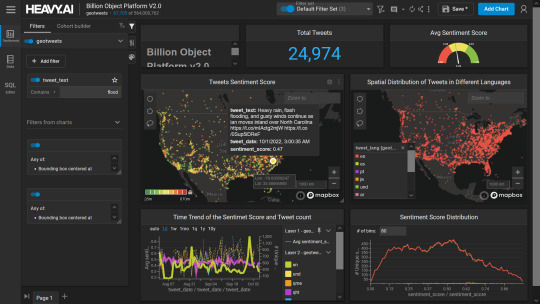
Smart City Initiatives: The Geographic Information System (GIS) offers advanced and user-friendly capabilities for Smart City projects and allows to capture, store and manipulate, analyze and visualize spatially referenced data. It is used for spatial analysis and modeling. It is the cornerstone of smart city planning, enabling the integration of data for efficient urban management. It supports initiatives related to traffic management, waste disposal, energy consumption, and overall infrastructure development.
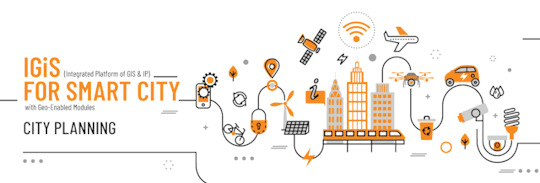
Education and Research: GIS is increasingly utilized in education and research for visualizing and analyzing spatial data. It enables students and researchers to explore geographic relationships, conduct field studies, and enhance their understanding of various subjects.

Agricultural Management and Precision Farming: Farmers leverage GIS to optimize agricultural practices by analyzing soil conditions, crop health, and weather patterns. Precision farming techniques, facilitated by GIS, contribute to increased crop yields and sustainable farming practices.

Real Estate and Property Management: In the real estate sector, GIS aids in property mapping, land valuation, and site selection. It provides real estate professionals with valuable insights into spatial relationships, market trends, and optimal development opportunities.

Tourism and Recreation: GIS enhances the tourism industry by providing interactive maps, route planning, and location-based information. It assists tourists in exploring destinations, finding attractions, and navigating efficiently.

The broad and varied involvement of GIS in our daily lives underscores its significance as a technology that not only facilitates geographic data analysis but also contributes to the efficiency, safety, and interconnectedness of modern society. As GIS applications continue to evolve, their impact on daily activities is expected to further expand and refine.
#gis#architectdesign#architecture#city#education#geographic information system(gis)#geographical indication
12 notes
·
View notes
Text
The Basics of Memecoin Launch: What You Need to Do
In the world of cryptocurrency, memecoins have become a fascinating trend. Inspired by internet memes and fueled by online communities, these tokens have gained massive popularity and have even created some significant financial success stories. Launching your own memecoin can be both exciting and rewarding, but it requires careful planning and a clear understanding of the basics. In this blog, we’ll cover everything you need to know about launching a memecoin, including the essential steps, key considerations, and important tips.

What is a Memecoin?
Before diving into the launch process, it’s important to understand what a memecoin is. A memecoin is a type of cryptocurrency that is primarily driven by the power of internet culture, humor, and memes. Unlike traditional cryptocurrencies like Bitcoin or Ethereum, which are based on specific technology or use cases, memecoins often derive their value from the strength of their community and the viral nature of their branding.
Famous Examples of Memecoins:
Dogecoin (DOGE): Initially created as a joke, Dogecoin became one of the most popular memecoins, thanks to its strong community and widespread recognition.
Shiba Inu (SHIB): Another memecoin inspired by Dogecoin, SHIB gained attention as the “Dogecoin killer” and saw massive price surges driven by social media hype.
The success of these memecoins demonstrates that with the right strategy and community support, a memecoin can gain significant traction and even become a valuable asset.
Step 1: Define Your Memecoin’s Purpose and Concept
The first step in launching a memecoin is to clearly define its purpose and concept. Since memecoins are often driven by humor and internet culture, it’s essential to come up with a concept that resonates with your target audience.
Key Considerations:
Theme and Branding: Choose a theme that is relatable, funny, or meaningful to your intended community. The more your memecoin aligns with a popular meme or internet trend, the higher the chances of it gaining viral attention.
Token Name and Symbol: Pick a catchy and memorable name for your token, along with a unique symbol that stands out in the market.
Community Focus: Remember that the success of a memecoin relies heavily on the strength of its community. Define your target audience and think about how you’ll engage them.
For example, if you’re launching a memecoin based on a popular animal meme, make sure your branding, messaging, and community outreach are aligned with that theme.
Step 2: Choose the Right Blockchain Platform
Once you’ve defined your concept, the next step is to choose a blockchain platform to launch your memecoin. The blockchain you select will play a critical role in determining the token’s functionality, security, and transaction speed.
Popular Blockchain Platforms for Memecoins:
Ethereum: Known for its robust smart contract functionality, Ethereum is one of the most widely used platforms for launching tokens. However, it can have high transaction fees, especially during periods of network congestion.
Binance Smart Chain (BSC): BSC offers lower transaction fees and faster processing times compared to Ethereum, making it a popular choice for new memecoins.
Solana: Solana is gaining popularity due to its high throughput and low fees. It’s an excellent choice for those looking to create tokens with fast and affordable transactions.
When choosing a blockchain, consider factors such as transaction fees, speed, security, and the availability of development tools. Your choice will impact the user experience and the overall success of your memecoin.
Step 3: Develop a Tokenomics Plan
Tokenomics refers to the economic structure behind your token, including the total supply, distribution, and incentives for holding or using the token. A well-thought-out tokenomics plan is essential for attracting investors and ensuring long-term sustainability.
Important Aspects of Tokenomics:
Total Supply: Decide how many tokens will be created. Some memecoins have a limited supply to create scarcity, while others may have a large supply to encourage widespread use.
Distribution Strategy: Plan how the tokens will be distributed, such as through airdrops, presales, or community rewards. Consider allocating a portion to the development team, marketing, and community incentives.
Incentives: Offer incentives for holding or using the token, such as staking rewards, participation in governance, or access to exclusive content or features.
Your tokenomics plan should be transparent and communicated clearly to your community. This builds trust and encourages people to invest in and support your memecoin.
Step 4: Build and Engage Your Community
The success of a memecoin depends heavily on the strength and engagement of its community. Building a vibrant and active community is crucial for generating interest, driving adoption, and maintaining momentum.
Community Building Strategies:
Social Media Presence: Establish a presence on social media platforms like Twitter, Reddit, Telegram, and Discord. These platforms are essential for engaging with your audience, sharing updates, and promoting your memecoin.
Content Creation: Create engaging content that aligns with your memecoin’s theme. This can include memes, videos, blog posts, and other shareable content that can go viral.
Airdrops and Giveaways: Run airdrops, giveaways, or contests to incentivize people to join your community and hold your token. These activities can help spread the word and attract new members.
Remember that the community is the lifeblood of your memecoin. Engage with them regularly, listen to their feedback, and involve them in the development and promotion of your project.
Step 5: Promote Your Memecoin
Promotion is key to getting your memecoin noticed in the crowded crypto market. A successful promotion strategy will help your memecoin gain visibility, attract investors, and create buzz.
Effective Promotion Tactics:
Influencer Marketing: Collaborate with influencers in the crypto and meme space who can promote your token to their followers. A well-timed tweet or mention from a popular influencer can generate significant interest.
Press Releases: Distribute press releases to crypto news outlets and websites to announce your memecoin’s launch. This can help you reach a broader audience and establish credibility.
Listing on Exchanges: Once your token gains traction, consider listing it on decentralized exchanges (DEXs) like Uniswap, PancakeSwap, or Raydium. This makes it easier for people to buy, sell, and trade your memecoin.
The more people know about your memecoin, the more likely it is to succeed. Use a mix of online marketing, community outreach, and partnerships to maximize your exposure.
Step 6: Monitor and Adapt
Launching a memecoin is just the beginning. To ensure long-term success, you need to monitor your project’s performance, gather feedback from the community, and adapt your strategy as needed.
Key Areas to Monitor:
Market Performance: Track the price, trading volume, and market sentiment surrounding your token. This helps you understand how your memecoin is performing and identify areas for improvement.
Community Feedback: Regularly engage with your community to gather feedback and suggestions. This feedback is invaluable for making improvements and addressing any issues.
Partnership Opportunities: Explore partnerships with other projects, platforms, or influencers to expand your reach and enhance your memecoin’s utility.
Being proactive and responsive to market changes and community needs will help your memecoin stay relevant and maintain its momentum.
Conclusion
Launching a memecoin can be an exciting and rewarding venture, but it requires careful planning, a clear strategy, and ongoing community engagement. By following the steps outlined in this guide, you can create a successful memecoin that resonates with your target audience and gains traction in the cryptocurrency market.
Remember that the key to success in the memecoin space is the strength of your community, the clarity of your tokenomics, and the effectiveness of your promotion efforts. With the right approach, your memecoin could be the next big thing in the world of crypto.
At the end we must suggest you about create your own memecoins token for bright future!! And also if you are really intrested then must visit solana launcher, We done tons of Research and found this amazing platform.
Whether you’re looking to create a fun and engaging token or launch a serious project with real-world applications, the basics of memecoin launch remain the same. Focus on building a strong foundation, engaging your community, and adapting to the ever-changing landscape of the crypto market.
2 notes
·
View notes
Text
#Lore24 Weekly Post (8/52) - Mobile Support Units
BRIEF DATA
Mobile Support Units are a network of magichines dedicated towards repairing, assisting, and supporting other magichines in dangerous situations or emergencies. They semi-frequently operate in conjunction with the Almandine Order, in the form of a small detachment that is usually stationed on the Itinerant Fist.
The MSUs form a crucial backbone in the magichine society's infrastructure, embodying a commitment to the well-being and functionality of their kind. The MSU's main goal is to assist magichines accessing support--sometimes this means directly supplying care, sometimes getting those in need of care to places where they can receive it, sometimes just assisting others, sometimes a simple emergency repair.
The MSUs operate with a diverse skill set, ranging from emergency repairs to providing medical assistance and logistical support. Equipped with advanced diagnostic tools and nano-repair modules, they can address a spectrum of issues magichines might encounter in the field.
In addition to their reactive role, MSUs engage in proactive measures such as routine maintenance and preventive care programs. This forward-thinking approach aims to identify and address potential issues before they escalate, contributing to the overall sustainability and longevity of the magichine population. MSUs embody a sense of camaraderie and shared responsibility, reinforcing the idea that the strength of magichine society lies not just in individual capabilities but in the collective support and collaboration of its members.
OPERATIONS
Rescue and Recovery Operations: During emergencies such as natural disasters or hostile encounters, MSUs coordinate rescue and recovery efforts to locate and evacuate stranded or incapacitated magichines. They employ specialized search algorithms, deploy rescue drones, and coordinate with other units to ensure swift and efficient operations.
Data Analysis and Research: MSUs contribute to ongoing research efforts in arcane mechanics by collecting and analyzing data from field operations. They document anomalies, record performance metrics, and collaborate with research institutions to advance understanding and innovation in magichine technology.
Emergency Repairs: MSUs are equipped with versatile nano-repair modules capable of swiftly addressing mechanical failures and damage sustained by magichines in the field. Whether it's a malfunctioning limb or a critical system failure, the MSUs excel in on-the-spot repairs.
Medical Assistance: In situations where magichines require medical attention, MSUs provide immediate aid. They carry advanced medical modules capable of diagnosing and treating various health issues, from minor glitches in cognitive functions to more severe physical injuries.
Logistical Support: MSUs play a crucial role in ensuring the smooth logistical operations of the Sun Corps. They coordinate transportation, resource allocation, and communication to enhance the efficiency of magichine missions. This includes managing supply chains and optimizing routes for strategic deployments.
Preventive Maintenance: MSUs implement proactive maintenance protocols to prevent system failures and optimize operational efficiency. This includes conducting routine inspections, performing system checks, and applying software updates to ensure that magichines remain in peak condition.
Environmental Adaptation: MSUs are equipped with modules that allow magichines to adapt to diverse environmental conditions. Whether operating in extreme temperatures, low-gravity environments, or radiation-heavy zones, the MSUs ensure magichines are suitably equipped and protected.
Training and Skill Enhancement: Beyond immediate support, MSUs contribute to the ongoing development of magichines' skills. They organize training programs, share knowledge on latest advancements, and facilitate skill enhancement sessions to ensure magichines are well-prepared for evolving challenges.
Community Outreach: MSUs engage in community-building initiatives by fostering a sense of unity among magichines. They organize events, facilitate communication channels, and act as mediators to address concerns within the magichine society, promoting a cohesive and supportive community.
STRUCTURE
MSUs are organized into regional divisions, each responsible for a designated geographical area or sector of operations. These divisions are led by experienced magichines known as Regional Coordinators, who oversee all MSU activities within their jurisdiction.
MSUs employ cross-functional teams consisting of magichines with diverse skill sets and specializations. These teams may include engineers, medical specialists, logistics experts, and data analysts, enabling MSUs to tackle a wide range of challenges and tasks with precision and efficiency.
The three main ways regional MSU divisions organize their members are:
Rescue Team (1 - 20 operators)
Team Leader: Coordinates and leads small rescue teams during emergencies.
Emergency Medics: Provide immediate medical assistance in crisis situations.
Technical Specialists: Skilled operators for rapid technical solutions.
Communication Operator: Maintains communication between the rescue team and the central command.
Field Engineer: Conducts quick repairs and ensures the functionality of equipment.
Rapid Response Company (100 - 300 operators)
Company Commander: Leads the Rapid Response Company and oversees its operations.
Medical Support Unit: A specialized team with advanced medical capabilities.
Technical Assistance Squad: Rapidly deploys for technical repairs and solutions.
Logistics and Coordination Team: Manages resources, transportation, and communication.
Training Instructors: Conduct ongoing training for the larger unit.
Support Brigade (2500 - 4000 operators)
Brigade Commander: Leads the entire Support Brigade, responsible for major decisions.
Medical Division: Chief Medical Officer and specialized medical teams.
Engineering Corps: Chief Engineer and technicians for extensive technical support.
Logistical and Communication Wing: Coordinates resource allocation and communication strategies.
Training and Education Department: Develops and implements training programs.
Field Units: Small teams specialized in different tasks, deployed as needed.
3 notes
·
View notes
Note
what kind of hours do zoo workers have? how often do they get to reintroduce animals to the wild? do they get to work with international zoos and nature reserves? do they have to work with people a lot? how do they choose what plants go into the enclosures of animals that live in drastically different environments?
There are many different zoo workers including animal care specialists, veterinarians, guest guides, and support staff such as custodians and staff for the gift shops, food services, and ticket intake. And those are just the employees that work on site on a standard day, not including administrative work! In terms of animal care specialists, the standard working day is 8 hours but it can vary. Animal care specialists are very busy! A single animal care specialist will often be responsible for entire areas. For example, instead of being just a gorilla caretaker, one would be primate specialist for the African rainforest area which would have them dividing their time between the gorillas, mandrills, and colobus monkeys. On top of this, they will often assist in other departments as needed due to the unpredictable nature of zoo work. So standard full time hours, but early mornings would be common and some would be on call while off duty, especially vets.
Introducing animals to the wild is a long and slow process that necessitates collaboration between many people and organizations. The Calgary Zoo is also the Wilder Institute, the latter referring to the conservation and international affairs aspect of the institution. The Wilder Institute and organizations like it in other zoos do a lot of work involving the communities local to where their animals are indigenous to, to help protect these species in the wild. The Wilder Institute's community conservation project works to help develop symbiotic relationships between people and wildlife internationally to support long term sustainability. While the majority of animals in zoos cannot be released, when there is an animal that is determind to be able to thrive in the wild the institute will collaborate with communities and organizations local to the animals native region to set it up for the most successful reintroduction policy. So animal releases are not very frequent, but when they are done there is a lot of work done to ensure they are done right. Because the Calgary Zoo is in Canada, they mostly do wild release with species native to the area. They work with local wildlife rehab centers to help raise rescued infants (one of the endangered owls at the Calgary Zoo's Canadian Wilds exhibit is a prolific foster mother for chicks) and will house unreleasable animals such as nuisance bears to prevent them from being euthanized. We tend to think of zoos and sanctuaries as very different, but their work overlaps.
Every (credible) zoo works with many other zoos and nature reserves, acting as one branch of a series of massive conservation programs and initiatives. The Wilder Institute collaborates with a wide network of international bodies, and doing so is often a requirement for accreditation. Zoos as a whole are sort of a living Svalbard seed vault-- the species survival plan matches animals across zoos to find the best genetic and personality matches to allow animals to breed in captivity to create a population safety net for the species. This means that even if an animal goes extinct in the wild, there will be a diverse and healthy population in captivity that could potentially repopulate their native area. This is why I am such a big supporter of zoos! They do so much to prevent extinction on a global scale.
Working with people is a MASSIVE part of zoo work. Zoos have tons of employees and volunteers whose main jobs are answering questions and educating the public. The most important animal in sucessful conservation is humans, because we have the power to mobilize and save other species together. As such, zoos work with guests of all ages to raise awareness, foster appreciation and passion for wildlife, and raise money for their work and projects.
This is a great question which boils down to the basics: what does the species use the plants around it for? Obviously if you're furnishing an outdoor enclosure in Calgary the plants of the African rain forests aren't going to thrive. Additionally, since species are staying in the same areas, if they are hard on the plants they aren't going to grow back as well. As such, native flora that is sturdy and hearty works well, or fake trees that are specifically made to be climbed on can be a good substitute. Keepers may even put greens and foliage on wood structures to mimic tree foraging. Most plants are fair game as long as they are safe to ingest and add something to the habitat, meaning that once the practical concerns are met (safety, sturdiness, hardiness) aesthetic choices can be made.
Hope this answers all your questions! I took my time to make sure I was thorough.
17 notes
·
View notes
Text
Crafting an Optimal Study Environment: Tips for UPSC Aspirants at Krishna PG Stays
Embarking on the journey to crack the UPSC (Union Public Service Commission) examination requires dedication, perseverance, and strategic preparation. Among the myriad factors that contribute to success, creating the perfect study environment is paramount. For UPSC aspirants residing at Krishna PG Stays, here are some invaluable tips to optimize your study space and maximize your chances of achieving your goals.
Designate a Dedicated Study Area: Establish a specific corner or room within your Krishna PG Stays accommodation as your study zone. This designated space will serve as your sanctuary for focused learning, free from distractions and conducive to concentration.

Prioritize Comfort and Ergonomics: Invest in comfortable seating and ergonomic furniture to support long study sessions without physical discomfort. Ensure that your chair provides adequate lumbar support and that your desk is at an appropriate height to promote good posture and prevent fatigue.

Harness Natural Light: Whenever possible, position your study area near a window to harness natural light. Natural lighting not only reduces eye strain but also enhances mood and productivity, creating a more inviting and refreshing study environment.
Minimize Distractions: Identify and minimize potential distractions in your study space. Keep your study area clutter-free and free from unnecessary gadgets or items that may tempt you to procrastinate. Consider using noise-canceling headphones to block out external sounds and maintain focus.

Personalize Your Space: Infuse your study environment with personal touches that inspire and motivate you. Decorate your study area with motivational quotes, pictures of inspirational figures, or vision boards outlining your career aspirations. Surrounding yourself with positive imagery cultivates a sense of purpose and determination.
Organize Study Materials Effectively: Implement organizational systems to keep study materials easily accessible and neatly arranged. Use shelves, folders, or storage bins to categorize books, notes, and reference materials, ensuring efficient retrieval when needed. A well-organized study space fosters mental clarity and streamlines the learning process.

Establish a Study Routine: Develop a consistent study routine tailored to your individual preferences and energy levels. Allocate specific times each day for focused study sessions, making optimal use of peak concentration periods. By adhering to a structured study schedule, you cultivate discipline and momentum in your exam preparation.

Stay Connected but Manage Social Interactions: While residing at Krishna PG Stays, it's essential to strike a balance between social interactions and solitary study time. Engage in collaborative study sessions with fellow UPSC aspirants to exchange ideas and insights, but also allocate sufficient uninterrupted periods for independent study and reflection.

Take Breaks and Practice Self-Care: Recognize the importance of regular breaks and self-care activities in maintaining productivity and well-being. Incorporate short breaks into your study routine to rest and recharge, whether it's taking a leisurely walk, practicing mindfulness, or indulging in a hobby. Prioritizing self-care nurtures resilience and sustains long-term motivation in your UPSC journey.

Seek Support and Guidance: Leverage the resources and support networks available to you at Krishna PG Stays and beyond. Engage with mentors, tutors, or online forums to seek guidance, clarify doubts, and stay informed about UPSC exam trends and strategies. Surrounding yourself with a supportive community fosters collaboration, accountability, and collective growth.
In conclusion, optimizing your study environment is instrumental in your UPSC preparation journey at Krishna PG Stays. By implementing these tips and customizing your study space to suit your needs, you empower yourself to study effectively, stay motivated, and ultimately realize your aspirations of success in the UPSC examination. Stay focused, stay determined, and embrace the transformative power of your dedicated study environment.
Visit Krishna PG for comfortable accommodation while preparing for your UPSC exams.
#hostel#student#upsc#accomodation#hospitality#best pg in karol bagh#PG for girls and boys#PG with food#student life
3 notes
·
View notes
Text
Agriculture Marketplace for Farmers
In the vast and ever-evolving landscape of agriculture, farmers find themselves at the heart of a dynamic marketplace that is continually shaping the future of food production. With technological advancements and changing consumer preferences, the agricultural marketplace has become more intricate, offering farmers a plethora of opportunities and challenges. This article explores the friendly terrain of the agriculture marketplace, highlighting how farmers can cultivate success in this modern era.
The Digital Dawn:
One of the most transformative developments in recent years is the advent of digital platforms designed to connect farmers with markets, suppliers, and technology. These user-friendly platforms empower farmers by providing them with real-time information on crop prices, weather forecasts, and innovative farming practices. From online marketplaces to mobile apps, technology has become an indispensable tool for farmers looking to optimize their operations and make informed decisions.
Seeding Innovation:
The agriculture marketplace is a fertile ground for innovation, with a variety of cutting-edge technologies designed to enhance productivity and sustainability. Precision farming, for example, allows farmers to tailor their approach to each individual crop, optimizing resources and minimizing environmental impact. Drones and satellite imagery enable farmers to monitor their fields with unprecedented precision, ensuring that crops receive the care they need. Embracing these innovations can not only boost yields but also contribute to a more sustainable and efficient agricultural ecosystem.
Market Access for All:
The modern agriculture marketplace is characterized by inclusivity, providing a platform for farmers of all sizes, from smallholders to large-scale operations. Online marketplaces and cooperatives facilitate direct connections between farmers and buyers, eliminating unnecessary intermediaries and ensuring fair prices for agricultural produce. This democratization of market access empowers smaller farmers to compete on a level playing field, fostering a more equitable and resilient agricultural industry.
Sustainable Practices:
As global awareness of environmental issues grows, consumers are increasingly seeking out sustainably produced food. Farmers are responding by adopting eco-friendly practices that not only benefit the planet but also enhance the marketability of their products. The agriculture marketplace is becoming a hub for sustainable initiatives, promoting practices such as organic farming, regenerative agriculture, and agroforestry. This shift towards sustainability not only meets consumer demand but also ensures the long-term viability of farming for future generations.
Collaboration and Knowledge Sharing:
In the friendly corridors of the agriculture marketplace, collaboration and knowledge sharing are key pillars of success. Farmers are joining forces in online communities, sharing experiences, insights, and best practices. This collaborative spirit extends beyond borders, creating a global network where farmers from different regions can learn from each other and collectively address challenges. By fostering a culture of collaboration, the agriculture marketplace becomes a supportive ecosystem that nurtures growth and resilience.
Conclusion:
The agriculture marketplace is undergoing a remarkable transformation, driven by technology, innovation, and a commitment to sustainability. For farmers, this presents a landscape rich with opportunities to thrive and cultivate success. By embracing digital tools, adopting sustainable practices, and engaging in collaborative efforts, farmers can navigate this friendly terrain with confidence, ensuring a bountiful harvest for generations to come.
2 notes
·
View notes
Text
Top 10 Reasons Why Sponsorship Is a Good Marketing Strategy
In the competitive world of marketing, businesses are constantly seeking innovative strategies to reach their target audience and increase brand visibility. One such strategy that has gained significant popularity over the years is sponsorship.
From sponsoring events, sports teams, or influencers, businesses are leveraging the power of sponsorship to boost their marketing efforts.
In this article, we will delve into the top reasons why sponsorship is a good marketing strategy and how it can benefit businesses in various ways.
1. Enhanced Brand Visibility
Sponsorship provides an excellent opportunity for businesses to increase their brand visibility. By associating with popular events, teams, or individuals, companies can gain exposure to a larger audience that they might not have reached through traditional advertising methods.
The visibility gained through sponsorship helps in building brand awareness and recognition among the target market.
2. Credibility and Trust
When a reputable business sponsors an event or supports a cause, it enhances the company's credibility and trustworthiness. Consumers tend to have more confidence in brands that are actively involved in the community or support causes they care about.
By aligning with a credible event or organization, businesses can establish trust with their audience, leading to increased customer loyalty and positive brand perception.
3. Targeted Marketing
Sponsorship allows businesses to engage in targeted marketing efforts. Depending on the event or team sponsored, companies can reach a specific demographic that aligns with their target market.
This level of precision in marketing helps in delivering the right message to the right audience, leading to higher conversion rates and better return on investment (ROI).
4. Emotional Connection
Sponsorship offers a unique opportunity to create an emotional connection with consumers. By supporting events or causes that resonate with their audience, businesses can tap into consumers' emotions, making their brand more memorable and relatable.
This emotional connection fosters long-term customer relationships and can turn customers into brand advocates.
5. Differentiation from Competitors
In a saturated market, standing out from the competition is crucial for success. Sponsorship provides a way for businesses to differentiate themselves from competitors.
When a company sponsors an exclusive event or partners with a popular figure, it sets them apart from other brands and gives them a competitive edge.
6. Media Exposure
Sponsorship often comes with media coverage and publicity. Events or teams that receive sponsorship deals usually attract media attention, providing businesses with additional exposure beyond their initial investment.
This media exposure can lead to press coverage and social media mentions, further amplifying the brand's reach and impact.
7. Networking Opportunities
Sponsorship opens doors to valuable networking opportunities. Businesses can connect with other sponsors, event organizers, and industry influencers, leading to potential collaborations and partnerships.
Networking in such settings can also help in gaining insights into the latest trends and developments in the industry.
8. Boosting Employee Morale
Sponsorship is not just beneficial for external stakeholders; it can also have a positive impact on employees. When employees see their company actively involved in supporting causes or events, it boosts their morale and sense of pride in their workplace. This, in turn, leads to a more motivated and engaged workforce.
9. Long-Term Brand Exposure
Unlike traditional advertising that has a limited shelf life, sponsorship offers long-term brand exposure.
For example, if a company sponsors a sports team for an entire season, their logo and brand name will be consistently displayed throughout the duration of the season. This sustained exposure helps in reinforcing brand recall and recognition.
10. Measurable ROI
Contrary to the belief that sponsorship's impact is challenging to measure, businesses can effectively track their return on investment.
Through various metrics such as increased website traffic, social media engagement, and sales data, companies can analyze the success of their sponsorship efforts and make data-driven decisions for future investments.
Conclusion
Sponsorship is a powerful marketing strategy that offers numerous benefits for businesses. From increased brand visibility and credibility to targeted marketing and emotional connections, businesses can leverage sponsorship to achieve their marketing goals.
By investing in the right sponsorships and measuring their impact, companies can ensure that their sponsorship endeavors yield a positive return on investment. So, if you're looking for an effective way to elevate your brand's presence and connect with your audience on a deeper level, consider sponsorship as a key component of your marketing strategy.
FAQs
Q. What types of events are suitable for sponsorship?
Events like sports competitions, industry conferences, charity galas, and cultural festivals are suitable for sponsorship, depending on your target audience and brand objectives.
Q. Is sponsorship only beneficial for big businesses?
No, sponsorship can benefit businesses of all sizes. Small businesses can find success by sponsoring local events or collaborating with micro-influencers.
Q. How do I measure the success of a sponsorship campaign?
You can measure the success of a sponsorship campaign through various metrics such as website traffic, social media engagement, brand mentions, and sales data.
Q. What are some cost-effective sponsorship options for startups?
Startups can explore partnerships with local community events, digital influencers, or non-profit organizations to gain cost-effective sponsorship opportunities.
Q. Can sponsorship lead to negative publicity?
While it is possible, thorough research and careful selection of events or causes to sponsor can significantly minimize the risk of negative publicity.
3 notes
·
View notes
Text
Bombing!! A Graffiti Sandbox: 1 Year Revenue Breakdown + Retrospective
I'm going to give a little breakdown of the cost/profits of my solo developed creative sandbox graffiti game Bombing!!: A Graffiti Sandbox, from a one-year snapshot after release.
Disclaimer: This information was originally posted in July 2022 on my Twitter, and I'm reposting it here because I believe it's incredibly useful information for other developers to have when publishing something. It's the exact kind of information I wish I had when first venturing into gamedev solo!
Profit Breakdown
Units Sold (Steam): 1,167
Total Grossing (Steam): $5,792 USD
Total Net (Steam): $4,133 USD
Units Sold (Itch): 20
Total Grossing (Itchio): $106.00 USD
Cost Breakdown
Unity Plugins: $100.48 USD
Music (Licensing): $190.39 USD
Localization: $87.08 USD
Promo (Event fees + VO for reels): $55 USD
Steam listing: $125 USD
Total non-labour costs: $557.95 USD
Observations
Itch Organic Discoverability is typically very low. I tend not to use Itch as a primary host for my work because of this reason alone. It's pay structure is more equitable, but people rarely discover my games there. I use Itch to put my game in charitable bundles for good causes and for giving people an option to buy through there if they prefer, but I don't promote my work via that because I've never found success there.
At time of writing (July 2022) I was averaging ~$120 USD per month from Steam sales. As of November 2022 this has decreased to ~$90, which means my Steam profits of both Bombing!!: A Graffiti Paradise and Lofty Quest don't make enough sales to pass the $100 monthly Steam payout limit.
I don't plan to recoup labour fees on nay project, ever. Simply put, with how the market is and the devaluation of games in general I don't anticipate ever becoming sustainable enough to afford the price of the actual work I put into my projects. Bombing!!: A Graffiti Sandbox was made over the course of ~7 months with hundreds of hours of labour put into it - even in terms of minimum wage rates that's a lot for an indie title to try and make back on, so planning for that has always felt unrealistic for me.
I'm lucky I found a niche. Non-VR painting simulators are in short supply, and there was a lot of people who wanted to be able to draw in a world without an expensive VR barrier to entry. I think knowing the market and planning for that ended up being a smart move on my part.
A lot of success has been due to my network. Word of mouth spread on Bombing!!: A Graffiti Sandbox was pretty solid, and without word getting out early on I suspect these numbers would have shaken out a fair bit worse.
In Summary
I think Bombing!!: A Graffiti Sandbox was a success.
Honestly, as my first published digital title I expected it to flop and my goal was to simply make back the cost it took to get it onto the Steam store (~$125 USD). I think it had made that back in roughly a week after it launched, which blew me away.
I do think it was largely privilege and luck that got me there however. Even considering how rough the game is (looking at it now it's crazy to me that I actually shipped it) I'm super grateful it found its audience and a community that cared so deeply about it despite its flaws.
It's also a big reason why I want to make Bombing!! 2: A Graffiti Paradise the best that it can be, to properly give the people who supported me something even better to play around with :)
(As with anything else, I'm totally open to asks for specifics or further observations on this sort of stuff if there's anything else you'd like to know, or even just have any curiosities about! As I mentioned, when I was starting out I wish I had more bizdev resources that were transparent about raw numbers like this from the perspective of people working at a similar scale to myself, so I wanna give back however I can.)
#advice#indie games#indie game#marketing#bizdev#game dev#solo dev#game development#indie dev#indiedev#indie developer#gamedev#gamedevelopment
9 notes
·
View notes
Text
WINDOW 57: VIVIENNE BESSETTE (JANUARY 28 - MARCH 17, 2023)
WINNIPEG’S ONLY 24 HOUR ARTIST-RUN CENTRE PRESENTS VIVIENNE BESSETTE
Location: Artspace Building, corner of Bannatyne @ Arthur [sidewalk level]
window is pleased to present our fifty-seventh installation:

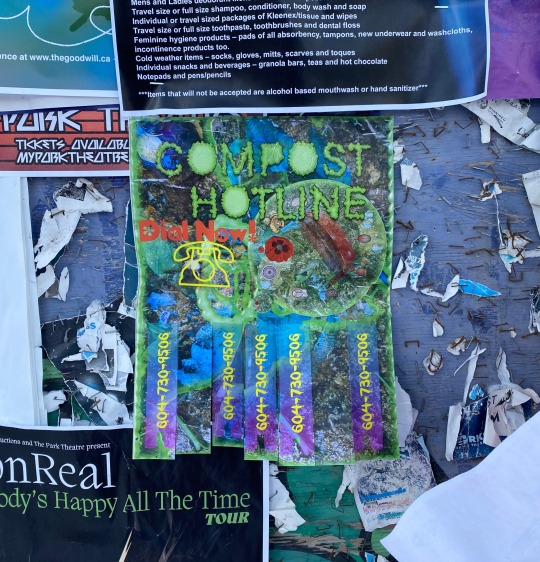
~~
Image descriptions:
[Image 1]: An oversize poster hangs in the window. It is green throughout with details in red, yellow, purple, and blue. It reads "COMPOST HOTLINE. Dial Now!" Strips dangle at the bottom with a phone number on some of them, as if ready to tear off. The imagery includes a red phone, compost, and superimposed images of flowers and organic material.
[Image 2]: A regular size version of Bessette's poster is stapled up on an outdoor bulletin, among other posters.
~~
Party line, 2023
Material list: RJ-45 talking to RJ-11, exponential growth of compost slime, spiritual technology of the tear-off flyer, landlordism, call waiting as extra sensory perception, antidote.
By Vivienne Bessette. On view until March 17, 2023.
~~
Artist statement:
The compost hotline is just a phone number but it is also a network of gardens, an imaginary friend and an always-developing informal online collab space where artists, gardeners and community organizers can temporarily freeze the flow of the internet (spirit net) to reflect and share research, personal archives, or the 2am–4am late-night google unconscious. It is meant as an alternative to death for precious trans liminal space, digital scraps, not-to-be-forgotten embodiments, or otherwise entombed hard drive materials. To apply, upload files into the google drive as a constellation of web links, screen shots, images, a recording, or text about what is keeping you up at night.
~~
About the artist:
Vivienne Bessette (b. 1982) is a queer settler & interdisciplinary artist whose ancestry ties them to Ireland, Croatia, France, and the Metis settlements of Cayer, MB, and Red River. Bessette incorporates drawing, painting, woodworking, sculpting, dying, writing, fermenting and building relationships with plants into their practice. They work in and out of the studio, the garden and the kitchen, developing sustainable and alternative modes of food production and utilizing unconventional materials. The strength of entangled and interdependent community is at the stomach of Bessette’s process. Bessette holds a BFA from Simon Fraser University. They have been involved with multiple garden and food-based collectives, including Commons Garden at Sahalli Park Community Garden, Garden Don’t Care, Looking at the Garden Fence, and the project What artists bring to the table for the Art Gallery of Greater Victoria with Derya Akay and Kurtis Wilson. Bessette was a Food Coordinator for Slow Waves Small Projects on Mayne Island. They have been published in The Capilano Review (“Pattern of Pears,” 2020 and “Organize Your Building with the Support of the Vancouver Tenants Union with the Belvedere Residents,” 2018). They live and work on the stolen and unceded territories of the xʷməθkʷəy̓əm, Sḵwx̱wú7mesh and səlí̓lwətaʔɬ Nations.
window is located on Treaty 1 Territory, the original lands of Anishinaabeg, Cree, Oji-Cree, Dakota, and Dene peoples and the Homeland of the Métis Nation. window is co-curated by Noor Bhangu, Mariana Muñoz Gomez, and Jennifer Smith.
This installation was made possible with the generous support of the Winnipeg Arts Council.
3 notes
·
View notes
Text
CureValue Addiction Treatment
Comprehensive Global Guide to Addiction Treatment Centers and Cost-Saving Solutions

Following detox, rehabilitation programs focus on addressing the psychological, emotional, and behavioral aspects of addiction. These programs can be conducted in inpatient or outpatient settings and often include cognitive-behavioral therapy (CBT), group counseling, and individual therapy sessions. Such therapies help patients identify the root causes of their addiction, develop coping strategies, and rebuild relationships.
Support groups like Alcoholics Anonymous (AA) or Narcotics Anonymous (NA) play a critical role in long-term recovery. They offer peer support, accountability, and a sense of community, which is vital in preventing relapse.

Clinica Reencuentro
Location: San Miguel de Allende, Mexico
Clinica Reencuentro is a specialized addiction treatment center that provides a comprehensive approach to addressing substance abuse and emotional health issues, including depression, anxiety, and codependency. The clinic’s 28-day program is designed to support individuals through detoxification, recovery, and sustained treatment, offering a holistic path to healing.
Website: https://curevalue.org/treatment/addiction-treatment/city-filter
Address: 116 Village Blvd, Princeton, NJ 08540


Please check more info here : https://curevalue.org/treatment/addiction-treatment/city-filter

St. Joseph Krankenhaus
Location: Berlin, Germany
St. Joseph Krankenhaus, part of the Alexianer network, is a prominent healthcare provider in Berlin, focusing on the needs of the elderly population. The hospital is known for its high-quality care and commitment to transparency, offering specialized services in geriatric psychiatry, memory disorder treatment, addiction therapy, and psychiatric outpatient care.
The hospital’s facilities include day clinics and senior care homes, ensuring that patients receive comprehensive support tailored to their specific needs. The Alexianer St. Joseph-Krankenhaus also provides a wide range of medical services through specialized clinics for neurology, psychiatry, psychotherapy, psychosomatics, and addiction medicine.
Rooted in Christian principles, the hospital emphasizes compassionate care and a holistic approach to treatment, making it a trusted healthcare destination for elderly patients in need of specialized services.
Average Savings: 34% compared to U.S. treatment costs
Please check more info here : https://curevalue.org/treatment/addiction-treatment/city-filter


Our Mission
Visit Here : https://curevalue.org/common/about-us.php

Who We Are
CureValue is a collective of dedicated professionals with a rich blend of expertise across the healthcare, travel, and technology sectors. Our team comprises healthcare experts who understand the nuances of medical care, travel specialists who streamline the logistics of medical tourism, and technology innovators who create seamless digital experiences for our users. This diverse skill set enables us to offer a comprehensive and user-friendly platform designed to connect patients with the best possible medical care worldwide. Our shared passion for enhancing healthcare access drives us to support individuals in finding the best treatment options, no matter where they are located.
What We Do
Visit us today : https://curevalue.org/
At CureValue, we provide an all-encompassing platform that simplifies the process of seeking medical care abroad. Our services include:
Medical Treatment and Procedure Search: Users can search for specific medical treatments and procedures, exploring a wide array of options to find the best fit for their needs.
Comparative Analysis: We enable users to compare various healthcare facilities globally, ensuring they can make informed decisions based on quality, cost, and available services.
Verified Profiles: Our platform features verified profiles of doctors and medical centers, offering transparency and confidence in the providers’ credentials and expertise.
Patient Reviews and Success Stories: Users can read extensive reviews and success stories from other patients, gaining insights into their experiences and outcomes.
Booking and Travel Arrangements: We streamline the booking process for treatments and handle travel arrangements, providing a hassle-free experience from start to finish.
Ongoing Support: Our commitment extends beyond the treatment phase. We offer continuous support from initial consultation through to post-treatment follow-up, ensuring a smooth and supportive journey for every patient.
Additionally, we provide in-depth information about potential destinations, including local attractions, accessibility, transportation options, living standards, visa requirements, and other pertinent details to assist American travelers in making informed choices. To further enhance the travel experience, each user is assigned a dedicated medical travel representative who provides personalized assistance throughout the entire process.
Our Values Visit us today : https://curevalue.org/
Quality: We are unwavering in our commitment to delivering the highest quality medical care. By partnering with reputable facilities and experienced healthcare professionals, we ensure that all our partners adhere to stringent quality standards. Our thorough verification process guarantees that patients receive care that meets or exceeds international benchmarks.
Transparency: Transparency is fundamental to our operations. We provide clear, detailed information regarding costs, procedures, and healthcare providers. This transparency empowers our users to make well-informed decisions about their healthcare options and financial commitments.
Accessibility: At CureValue, we are dedicated to making healthcare accessible to all. We offer a range of affordable treatment options and flexible payment plans to ensure that high-quality care is within reach for everyone, regardless of their financial situation.
Support: We are committed to supporting our users throughout their entire healthcare journey. From the initial consultation to post-treatment follow-up, our team is always available to provide guidance, answer questions, and ensure a smooth and positive experience.
Our Story
The inception of CureValue was inspired by a personal journey experienced by our founder. “Our mission at CureValue is to ensure that no one has to compromise on their health due to high costs or lack of access to quality care. We believe in providing a viable alternative for those seeking affordable healthcare solutions,” said Nicole Quispe, Public Relations Officer at CureValue. This eye-opening experience revealed the substantial savings and opportunities offered by medical tourism and sparked the creation of CureValue. Our platform was designed to help others benefit from similar opportunities, making high-quality healthcare more accessible and affordable.
Join Us
At CureValue, we are more than just a healthcare platform; we are a community dedicated to improving healthcare access and affordability. Whether you are a patient seeking high-quality treatment or a medical facility interested in collaborating with us, we invite you to join us in our mission. Explore how CureValue can assist you in finding better care and be part of our journey towards transforming the global healthcare landscape. Contact Us: https://curevalue.org/common/contact-us.php
Contact Us today to discover more about how CureValue can support you in achieving better healthcare outcomes.
Follow CureValue on Social Media:
Facebook: facebook.com/curevalue
Twitter: x.com/curevalue
Instagram: instagram.com/curevalue
LinkedIn: linkedin.com/company/curevalue
Pinterest: pinterest.com/curevalue
Tumblr: tumblr.com/curevalue
Reddit: reddit.com/user/curevalue
YouTube: youtube.com/@CureValue












0 notes
Text
How Home Detox in Los Angeles Can Lead to Lasting Sobriety
Home detox in Los Angeles offers a personalized and flexible approach to overcoming addiction, but its effectiveness extends beyond the immediate withdrawal phase. When managed properly, home detox can be a crucial step toward achieving lasting sobriety. This article explores how home detox in Los Angeles can set the foundation for long-term recovery and provide strategies for ensuring continued success.
Creating a Comfortable and Supportive Environment
One of the key benefits of home detox is the ability to detox in a familiar and supportive environment. Los Angeles offers a unique blend of tranquility and resources that can be leveraged to create a conducive recovery space. By detoxing at home, individuals are in their own comfortable surroundings, which can significantly reduce stress and anxiety. This comfort allows for a more focused and calm approach to managing withdrawal symptoms and initiating the recovery process.
Personalized Detox Plans
Home detox allows individuals to tailor their detox plans according to their specific needs and circumstances. In Los Angeles, this means integrating a variety of local resources into the recovery plan. Personalized strategies, such as incorporating wellness practices, nutritional support, and regular check-ins with healthcare professionals, can be customized to enhance the detox experience and lay a strong foundation for long-term sobriety.
Building a Strong Support Network
A critical component of lasting sobriety is having a robust support network. Home detox in Los Angeles provides an opportunity to build and engage with a supportive network of friends, family, and local recovery groups. Los Angeles boasts numerous support groups and community resources, such as Alcoholics Anonymous (AA) and Narcotics Anonymous (NA), which can offer continuous encouragement and accountability. Establishing connections with these groups during home detox helps individuals transition smoothly into ongoing recovery and strengthens their support system.
Access to Local Recovery Resources
Los Angeles is rich in recovery resources that can support long-term sobriety. During home detox, individuals can take advantage of local wellness centers, counseling services, and therapeutic practices. For example, engaging in holistic therapies, nutritional counseling, and stress management techniques available in Los Angeles can complement the detox process and address underlying issues related to addiction. These resources help individuals develop healthier habits and coping mechanisms, contributing to sustained sobriety.
Developing Healthy Routines
Home detox provides the opportunity to establish and maintain healthy routines that support long-term recovery. In Los Angeles, this could involve integrating outdoor activities, such as hiking or yoga, into daily life. Creating a structured schedule that includes regular exercise, balanced nutrition, and mindfulness practices can enhance physical and mental well-being, making it easier to maintain sobriety.
Professional Guidance and Follow-Up
While home detox offers many benefits, ongoing professional guidance is essential for lasting sobriety. Regular consultations with healthcare providers or addiction specialists ensure that individuals remain on track with their recovery goals and receive support for any emerging challenges. In Los Angeles, accessing follow-up care and therapy services helps individuals navigate the post-detox phase and build a sustainable recovery plan.
Conclusion
Home detox in Los Angeles can be a powerful catalyst for achieving lasting sobriety. By leveraging the comfort of home, personalizing detox plans, building a strong support network, accessing local resources, and developing healthy routines, individuals can create a solid foundation for long-term recovery. With the right strategies and ongoing professional support, home detox can lead to meaningful and enduring sobriety, setting individuals on a path to a healthier, more fulfilling life.
0 notes
Text
Think local and regional to sustain scaling South African enterprise growth - Journal Today Web
https://www.merchant-business.com/think-local-and-regional-to-sustain-scaling-south-african-enterprise-growth/?feed_id=197730&_unique_id=66e3866d4fd2d
#GLOBAL - BLOGGER
BLOGGER
With many SADC countries facing energy shortages, the renewable energy sector provides the needed recourse. Scaling South African businesses can, therefore, provide solar, wind, and other renewable energy solutions regionallySouth Africa’s economy grew at a modest annual average rate of 0.3% to 2% from 2021 to 2023. In contrast, the Southern African Development Community’s (SADC’s) economy expanded at a faster pace, with average growth rates ranging from 2.5% to 4%, according to the World Bank, International Monetary Fund (IMF), and United Nations. Leading SADC economies included Botswana, Mozambique, Zambia and Tanzania, experienced more robust growth, ranging between 3.5% and 6%. Other countries worth noting included Angola (which grew by between 3% and 4%), and Malawi (about 4% annually). Given these figures, a regional approach offers greater growth potential for South African businesses, particularly small and medium-sized enterprises (SMEs) looking to scale in the next three to five years. As the South African domestic market remains highly competitive and dominated by larger, more established enterprises, the SADC region presents untapped opportunities for expanding businesses to grow sustainably.Digital Products Why a regional focus is keyIn South Africa’s mature and predominantly oligopolistic market, competition for limited resources will be fierce, with procuring teams typically awarding opportunities to larger and more established organisations. For smaller enterprises, this creates a tough environment where the odds of breaking through are slim. The larger players are often seen as “safe bets” for procurement, suggesting smaller companies will need to go the extra mile to prove themselves and avoid costly mistakes to stand a chance over the longer-term. Given this context, many SMEs face significant barriers to growth domestically. In contrast, the SADC region offers a more favourable landscape for expansion. But this comes with problems, including differing regulations, business environments and socio-cultural dynamics. Setting up in a new country involves significant costs, and mistakes in regional expansion can jeopardise not only the venture abroad but the company’s operations in its home market as well. For this reason, collaboration with local partners in target markets is crucial.Partnering with a local enterprise can provide a South African business with vital knowledge, networks and trust within the host market. By teaming up with a host nation local partner, a South African SME signals its long-term commitment to the region and creates mutually beneficial relationships that support both businesses’ success. But partnerships should be approached with care and thorough due diligence. Assessing the prospective partner’s track record and gathering referrals from trusted sources can mitigate such risks. It is also essential to carry out commercial, legal, and financial checks to ensure a sound foundation for collaboration.Financing regional expansion is another critical challenge. While SADC has yet to establish itself as a cohesive trading bloc, making regional funding options limited, donor agencies currently fill part of the financing gap. But donor funding is finite and cannot support widespread growth. The SMEs seeking to scale up must look to development financiers, despite most of these institutions preferring to usually lend to larger, established companies with proven financial stability. For smaller businesses, gaining access to capital for regional expansion requires presenting a compelling case for commercial viability. Companies must demonstrate solid revenues, profitability and the ability to repay loans. Additionally, securing
guarantees from home markets can be complex, leading some businesses to seek funding within each country they plan to expand into. As a result, local partnerships will again be beneficial here due to them providing some of the local credibility needed to secure financing from host country banks or co-financing arrangements between regional and South African lenders.When expanding regionally, SMEs should focus on their core strengths and adjust only where necessary. Trying to diversify too much in unfamiliar markets can lead to failure. Instead, businesses should leverage their existing success while tailoring their approach to local market nuances. For example, a refrigerator manufacturer looking to expand into a regional market where most consumers are weekly wage earners might adjust their product mix to offer more units at affordable price points for these consumers. This adjustment ensures the company stays true to its core business model while catering to local market conditions.Digital Products Sectors with regional growth potentialGiven the SADC’s diverse economic landscape, several sectors offer significant growth opportunities for South Africa’s scaling businesses. These include:Agriculture and agro-processing: SADC countries are heavily reliant on agriculture, and there is significant potential to introduce and progress modern farming techniques, equipment, and agro-processing capabilities. South Africa’s established agribusiness expertise can be leveraged to build scalable ventures across the region, where food security and value-addition are priority areas.Renewable energy: With many SADC countries facing energy shortages, the renewable energy sector provides the needed recourse. Scaling South African businesses can, therefore, provide solar, wind, and other renewable energy solutions regionally, benefiting from lower production and import costs and favourable regulatory frameworks across some SADC countries.Light manufacturing and distribution: Manufacturing capabilities in South Africa can be used to produce goods that can be distributed across the region. By setting up local distribution hubs and manufacturing centres in neighbouring countries, companies can cut costs and serve regional markets more efficiently.Retail and digital services: As mobile and internet penetration rises across the SADC, digital services, particularly fintech, e-commerce and logistics present significant opportunities. South African companies can offer scalable digital platforms that cater to regional consumers and businesses, expanding their reach beyond the local market.Based on the above, focusing on regional opportunities in the SADC presents a viable pathway for scaling South African SMEs facing a depressed local economy. Key to success will be strategic partnerships, securing adequate funding and remaining committed to core strengths while adapting to local market demands. As SMEs navigate these opportunities, learning from larger enterprises and following a carefully planned regional strategy will ensure sustained, long-term success.James Maposa is the managing director at Birguid.“The SADC offers potential for growth across various sectors by leveraging South Africa’s strengths in agriculture, energy, manufacturing and digital services…”Source Link: https://mg.co.za/thought-leader/2024-09-10-think-local-and-regional-to-sustain-scaling-south-african-enterprise-growth/
http://109.70.148.72/~merchant29/6network/wp-content/uploads/2024/09/stock-photo-think-global-act-local-symbol-torn-orange-paper-with-words-think-global-act-local-beauti.jpeg
With many SADC countries facing energy shortages, the renewable energy sector provides the needed recourse. Scaling South African businesses can, therefore, provide solar, wind, and other renewable energy solutions regionally South Africa’s economy grew at a modest annual average rate of 0.3% to 2% from 2021 to 2023. In contrast, the Southern African Development Community’s … Read More
0 notes
Text
Think local and regional to sustain scaling South African enterprise growth - Journal Today Web - #GLOBAL
https://www.merchant-business.com/think-local-and-regional-to-sustain-scaling-south-african-enterprise-growth/?feed_id=197728&_unique_id=66e3866bb80be
With many SADC countries facing energy shortages, the renewable energy sector provides the needed recourse. Scaling South African businesses can, therefore, provide solar, wind, and other renewable energy solutions regionallySouth Africa’s economy grew at a modest annual average rate of 0.3% to 2% from 2021 to 2023. In contrast, the Southern African Development Community’s (SADC’s) economy expanded at a faster pace, with average growth rates ranging from 2.5% to 4%, according to the World Bank, International Monetary Fund (IMF), and United Nations. Leading SADC economies included Botswana, Mozambique, Zambia and Tanzania, experienced more robust growth, ranging between 3.5% and 6%. Other countries worth noting included Angola (which grew by between 3% and 4%), and Malawi (about 4% annually). Given these figures, a regional approach offers greater growth potential for South African businesses, particularly small and medium-sized enterprises (SMEs) looking to scale in the next three to five years. As the South African domestic market remains highly competitive and dominated by larger, more established enterprises, the SADC region presents untapped opportunities for expanding businesses to grow sustainably.Digital Products Why a regional focus is keyIn South Africa’s mature and predominantly oligopolistic market, competition for limited resources will be fierce, with procuring teams typically awarding opportunities to larger and more established organisations. For smaller enterprises, this creates a tough environment where the odds of breaking through are slim. The larger players are often seen as “safe bets” for procurement, suggesting smaller companies will need to go the extra mile to prove themselves and avoid costly mistakes to stand a chance over the longer-term. Given this context, many SMEs face significant barriers to growth domestically. In contrast, the SADC region offers a more favourable landscape for expansion. But this comes with problems, including differing regulations, business environments and socio-cultural dynamics. Setting up in a new country involves significant costs, and mistakes in regional expansion can jeopardise not only the venture abroad but the company’s operations in its home market as well. For this reason, collaboration with local partners in target markets is crucial.Partnering with a local enterprise can provide a South African business with vital knowledge, networks and trust within the host market. By teaming up with a host nation local partner, a South African SME signals its long-term commitment to the region and creates mutually beneficial relationships that support both businesses’ success. But partnerships should be approached with care and thorough due diligence. Assessing the prospective partner’s track record and gathering referrals from trusted sources can mitigate such risks. It is also essential to carry out commercial, legal, and financial checks to ensure a sound foundation for collaboration.Financing regional expansion is another critical challenge. While SADC has yet to establish itself as a cohesive trading bloc, making regional funding options limited, donor agencies currently fill part of the financing gap. But donor funding is finite and cannot support widespread growth. The SMEs seeking to scale up must look to development financiers, despite most of these institutions preferring to usually lend to larger, established companies with proven financial stability. For smaller businesses, gaining access to capital for regional expansion requires presenting a compelling case for commercial viability. Companies must demonstrate solid revenues, profitability and the ability to repay loans. Additionally, securing guarantees from
home markets can be complex, leading some businesses to seek funding within each country they plan to expand into. As a result, local partnerships will again be beneficial here due to them providing some of the local credibility needed to secure financing from host country banks or co-financing arrangements between regional and South African lenders.When expanding regionally, SMEs should focus on their core strengths and adjust only where necessary. Trying to diversify too much in unfamiliar markets can lead to failure. Instead, businesses should leverage their existing success while tailoring their approach to local market nuances. For example, a refrigerator manufacturer looking to expand into a regional market where most consumers are weekly wage earners might adjust their product mix to offer more units at affordable price points for these consumers. This adjustment ensures the company stays true to its core business model while catering to local market conditions.Digital Products Sectors with regional growth potentialGiven the SADC’s diverse economic landscape, several sectors offer significant growth opportunities for South Africa’s scaling businesses. These include:Agriculture and agro-processing: SADC countries are heavily reliant on agriculture, and there is significant potential to introduce and progress modern farming techniques, equipment, and agro-processing capabilities. South Africa’s established agribusiness expertise can be leveraged to build scalable ventures across the region, where food security and value-addition are priority areas.Renewable energy: With many SADC countries facing energy shortages, the renewable energy sector provides the needed recourse. Scaling South African businesses can, therefore, provide solar, wind, and other renewable energy solutions regionally, benefiting from lower production and import costs and favourable regulatory frameworks across some SADC countries.Light manufacturing and distribution: Manufacturing capabilities in South Africa can be used to produce goods that can be distributed across the region. By setting up local distribution hubs and manufacturing centres in neighbouring countries, companies can cut costs and serve regional markets more efficiently.Retail and digital services: As mobile and internet penetration rises across the SADC, digital services, particularly fintech, e-commerce and logistics present significant opportunities. South African companies can offer scalable digital platforms that cater to regional consumers and businesses, expanding their reach beyond the local market.Based on the above, focusing on regional opportunities in the SADC presents a viable pathway for scaling South African SMEs facing a depressed local economy. Key to success will be strategic partnerships, securing adequate funding and remaining committed to core strengths while adapting to local market demands. As SMEs navigate these opportunities, learning from larger enterprises and following a carefully planned regional strategy will ensure sustained, long-term success.James Maposa is the managing director at Birguid.“The SADC offers potential for growth across various sectors by leveraging South Africa’s strengths in agriculture, energy, manufacturing and digital services…”Source Link: https://mg.co.za/thought-leader/2024-09-10-think-local-and-regional-to-sustain-scaling-south-african-enterprise-growth/
http://109.70.148.72/~merchant29/6network/wp-content/uploads/2024/09/stock-photo-think-global-act-local-symbol-torn-orange-paper-with-words-think-global-act-local-beauti.jpeg
BLOGGER - #GLOBAL
0 notes
Text
Think local and regional to sustain scaling South African enterprise growth - Journal Today Web - BLOGGER
https://www.merchant-business.com/think-local-and-regional-to-sustain-scaling-south-african-enterprise-growth/?feed_id=197726&_unique_id=66e386690e515
With many SADC countries facing energy shortages, the renewable energy sector provides the needed recourse. Scaling South African businesses can, therefore, provide solar, wind, and other renewable energy solutions regionallySouth Africa’s economy grew at a modest annual average rate of 0.3% to 2% from 2021 to 2023. In contrast, the Southern African Development Community’s (SADC’s) economy expanded at a faster pace, with average growth rates ranging from 2.5% to 4%, according to the World Bank, International Monetary Fund (IMF), and United Nations. Leading SADC economies included Botswana, Mozambique, Zambia and Tanzania, experienced more robust growth, ranging between 3.5% and 6%. Other countries worth noting included Angola (which grew by between 3% and 4%), and Malawi (about 4% annually). Given these figures, a regional approach offers greater growth potential for South African businesses, particularly small and medium-sized enterprises (SMEs) looking to scale in the next three to five years. As the South African domestic market remains highly competitive and dominated by larger, more established enterprises, the SADC region presents untapped opportunities for expanding businesses to grow sustainably.Digital Products Why a regional focus is keyIn South Africa’s mature and predominantly oligopolistic market, competition for limited resources will be fierce, with procuring teams typically awarding opportunities to larger and more established organisations. For smaller enterprises, this creates a tough environment where the odds of breaking through are slim. The larger players are often seen as “safe bets” for procurement, suggesting smaller companies will need to go the extra mile to prove themselves and avoid costly mistakes to stand a chance over the longer-term. Given this context, many SMEs face significant barriers to growth domestically. In contrast, the SADC region offers a more favourable landscape for expansion. But this comes with problems, including differing regulations, business environments and socio-cultural dynamics. Setting up in a new country involves significant costs, and mistakes in regional expansion can jeopardise not only the venture abroad but the company’s operations in its home market as well. For this reason, collaboration with local partners in target markets is crucial.Partnering with a local enterprise can provide a South African business with vital knowledge, networks and trust within the host market. By teaming up with a host nation local partner, a South African SME signals its long-term commitment to the region and creates mutually beneficial relationships that support both businesses’ success. But partnerships should be approached with care and thorough due diligence. Assessing the prospective partner’s track record and gathering referrals from trusted sources can mitigate such risks. It is also essential to carry out commercial, legal, and financial checks to ensure a sound foundation for collaboration.Financing regional expansion is another critical challenge. While SADC has yet to establish itself as a cohesive trading bloc, making regional funding options limited, donor agencies currently fill part of the financing gap. But donor funding is finite and cannot support widespread growth. The SMEs seeking to scale up must look to development financiers, despite most of these institutions preferring to usually lend to larger, established companies with proven financial stability. For smaller businesses, gaining access to capital for regional expansion requires presenting a compelling case for commercial viability. Companies must demonstrate solid revenues, profitability and the ability to repay loans. Additionally, securing guarantees from
home markets can be complex, leading some businesses to seek funding within each country they plan to expand into. As a result, local partnerships will again be beneficial here due to them providing some of the local credibility needed to secure financing from host country banks or co-financing arrangements between regional and South African lenders.When expanding regionally, SMEs should focus on their core strengths and adjust only where necessary. Trying to diversify too much in unfamiliar markets can lead to failure. Instead, businesses should leverage their existing success while tailoring their approach to local market nuances. For example, a refrigerator manufacturer looking to expand into a regional market where most consumers are weekly wage earners might adjust their product mix to offer more units at affordable price points for these consumers. This adjustment ensures the company stays true to its core business model while catering to local market conditions.Digital Products Sectors with regional growth potentialGiven the SADC’s diverse economic landscape, several sectors offer significant growth opportunities for South Africa’s scaling businesses. These include:Agriculture and agro-processing: SADC countries are heavily reliant on agriculture, and there is significant potential to introduce and progress modern farming techniques, equipment, and agro-processing capabilities. South Africa’s established agribusiness expertise can be leveraged to build scalable ventures across the region, where food security and value-addition are priority areas.Renewable energy: With many SADC countries facing energy shortages, the renewable energy sector provides the needed recourse. Scaling South African businesses can, therefore, provide solar, wind, and other renewable energy solutions regionally, benefiting from lower production and import costs and favourable regulatory frameworks across some SADC countries.Light manufacturing and distribution: Manufacturing capabilities in South Africa can be used to produce goods that can be distributed across the region. By setting up local distribution hubs and manufacturing centres in neighbouring countries, companies can cut costs and serve regional markets more efficiently.Retail and digital services: As mobile and internet penetration rises across the SADC, digital services, particularly fintech, e-commerce and logistics present significant opportunities. South African companies can offer scalable digital platforms that cater to regional consumers and businesses, expanding their reach beyond the local market.Based on the above, focusing on regional opportunities in the SADC presents a viable pathway for scaling South African SMEs facing a depressed local economy. Key to success will be strategic partnerships, securing adequate funding and remaining committed to core strengths while adapting to local market demands. As SMEs navigate these opportunities, learning from larger enterprises and following a carefully planned regional strategy will ensure sustained, long-term success.James Maposa is the managing director at Birguid.“The SADC offers potential for growth across various sectors by leveraging South Africa’s strengths in agriculture, energy, manufacturing and digital services…”Source Link: https://mg.co.za/thought-leader/2024-09-10-think-local-and-regional-to-sustain-scaling-south-african-enterprise-growth/
http://109.70.148.72/~merchant29/6network/wp-content/uploads/2024/09/stock-photo-think-global-act-local-symbol-torn-orange-paper-with-words-think-global-act-local-beauti.jpeg
#GLOBAL - BLOGGER
With many SADC coun...
BLOGGER - #GLOBAL
0 notes